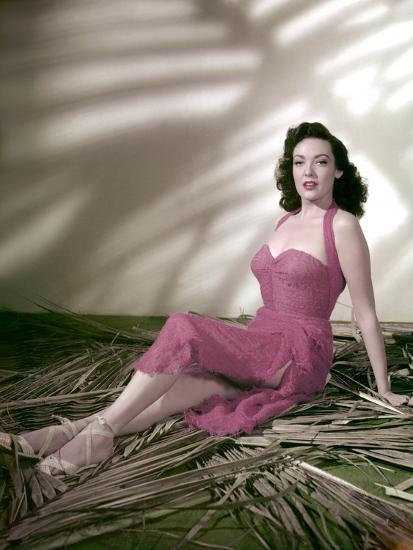In the golden era of Hollywood, when film was still drenched in glamour and studios wielded immense power, there emerged a star whose beauty and talent promised a future of boundless stardom. Her name was Linda Darnell. With ethereal features, a magnetic screen presence, and a voice that could captivate in a whisper, Darnell seemed destined for cinematic greatness. But her story, like so many others from Tinseltown’s golden age, is one marked by ambition, struggle, and an enigmatic end.

Born Monetta Eloyse Darnell in Dallas, Texas, in 1923, Linda was groomed for fame almost from birth. Her mother, Pearl, was convinced of her daughter’s star potential and pushed her toward the limelight with relentless determination. By the age of 11, Linda was modeling professionally. Her stunning looks caught the eye of local photographers, and before long, Hollywood began to take notice.
At just 15, Darnell was brought to Los Angeles for a screen test by 20th Century Fox. Despite her age, she exuded a maturity that belied her years, and studio executives were quick to recognize her potential. They signed her to a contract, and she made her debut in Hotel for Women (1939). From there, her career ascended rapidly. The public was captivated by her, and she was soon billed as one of the most promising young actresses in the industry.

Throughout the 1940s, Darnell became a staple in Fox’s productions. Her performances in films like The Mark of Zorro (1940), opposite Tyrone Power, and Blood and Sand (1941), helped solidify her reputation as a leading lady. But it was Forever Amber (1947) that would become both a highlight and a turning point in her career. Cast in the title role after numerous delays and recastings, Darnell delivered a passionate and controversial performance that drew both praise and criticism. The film, laden with sensuality and scandal for its time, thrust her into the spotlight but also stirred unease among more conservative circles.
Behind the scenes, Darnell’s life was anything but glamorous. Despite her rising fame, she struggled with insecurity, much of it stemming from the pressure her mother placed on her from a young age. The studio system, while providing her with roles, also demanded strict control over her image, weight, and personal choices. Like many women in Hollywood at the time, she was expected to conform to an ideal—both physically and behaviorally.

Her personal life mirrored the instability of her career. She married film cameraman Peverell Marley in 1943, but the relationship was troubled. They divorced in 1951. She had other relationships, some widely publicized and others kept quiet, but none seemed to offer her the emotional grounding she yearned for. Darnell also battled with alcoholism and the lingering effects of the emotional manipulation she endured in both her personal and professional life.
By the 1950s, Hollywood was evolving, and Darnell’s once meteoric career began to wane. Studios were turning their attention to newer faces, and the roles offered to Darnell became fewer and less prestigious. Still, she continued to work, appearing in television and on stage. She refused to retreat entirely from the spotlight, holding onto the identity she had been groomed to inhabit for most of her life.

Tragically, her life was cut short in a fire in 1965. While visiting friends in Glenview, Illinois, a fire broke out in the house. According to reports, Darnell had been sleeping on the first floor while her friends were upstairs. Believing a child was trapped in the burning home, she reportedly ran back into the house to help—a selfless act that led to severe burns over 80% of her body. She died shortly after, at just 41 years old.
Her death shocked the entertainment world and brought a premature end to a career that many believed still held promise. The irony of her demise was not lost on fans or biographers: a woman whose beauty once lit up the screen had been consumed by flames.
Today, Linda Darnell is often remembered in lists of “forgotten actresses” or tragic Hollywood stories. But that label does her a disservice. Her performances—marked by intensity, vulnerability, and elegance—continue to resonate with those who rediscover her work. Films like A Letter to Three Wives (1949), where she portrayed a woman of complexity and strength, offer a glimpse into the talent that made her a standout, even among the many stars of her time.

There are still mysteries surrounding her life. Why did the studio system seem to both elevate and confine her? What dreams did she harbor beyond the camera’s reach? What might she have become had she lived into the era of women reclaiming their agency in film?
Linda Darnell’s story is not just one of beauty and tragedy. It is also one of endurance, artistry, and the quiet strength required to navigate an industry that often consumes its brightest lights. More than a symbol of old-Hollywood glamour, she remains a poignant reminder of the women who helped shape cinema in its formative years—and paid a heavy price along the way.